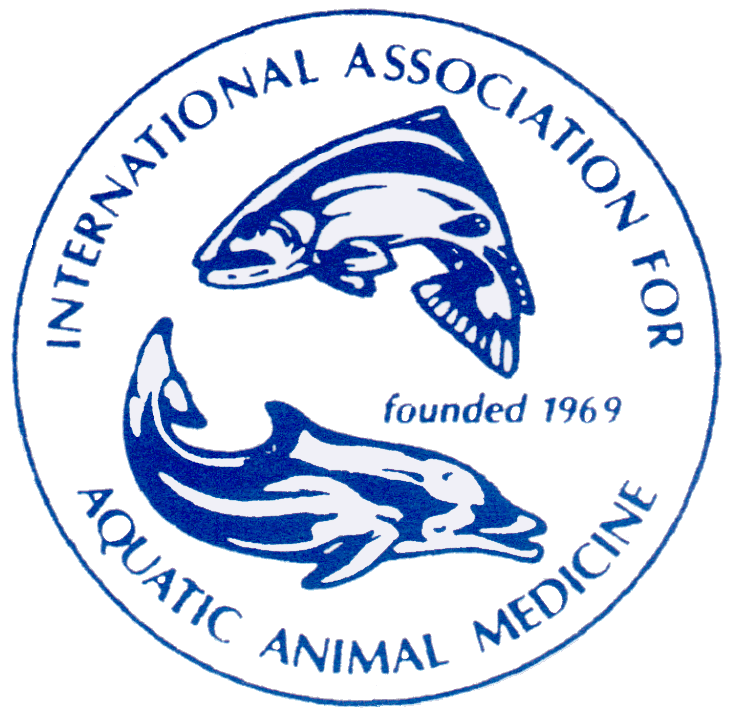The IAAAM Board mourns the passing of past IAAAM President Dr. Rhonda Ann Patterson in May 2017. Our thoughts are with her family and friends. The family has asked that friends “Please Pay Her Gifts Forward in Your Lives!”
A scholarship fund in Dr. Patterson’s name has been established at Western Kentucky University. Information on contributing to this fund may be obtained from Jessica Carver, College Heights Foundation, WKU, 1906 College Heights Blvd, #41016, Bowling Green, KY 42101.
Rhonda's Biography
Rhonda Ann Patterson was born September 19, 1965 in Carthage, Missouri to Ronald Ray and Patricia Ann Patterson. The family settled in St. Louis, MO where Rhonda graduated from Pattonville Senior High School in 1983, then graduated from the University of Missouri, earning a Bachelor of Science in Agriculture, Animal Sciences, in 1987.
Rhonda entered the University of Southern Mississippi in Hattiesburg, MS set on earning her Master of Science with a study of echolocation in marine mammals, specifically dolphins, working in conjunction with the Institute for Marine Mammal Studies in Gulfport, MS and the US Navy in San Diego, CA. Unfortunately, when the dolphin she was working with became ill and died, Rhonda was advised to direct her studies towards a doctorate thereby skipping the Master’s program. She earned her Doctorate of Microbiology with a specific interest in Immunology from Southern Miss in 1998 continuing her research with the Institute for Marine Mammal Studies and the US Navy, helping them diagnose diseases in their dolphins and determine strategies to produce antibodies to protect them in their high-stress work environments in oceans through the world.
As a member and officer of the International Association for Aquatic Animal Medicine, Dr. Patterson traveled extensively including trips to Australia and New Zealand. She served as President of IAAAM in 2005 – 2006. Recognized for her expertise in working with marine mammals, she presented papers at conferences in Holland and Portugal as well as sites throughout the United States. Additionally, she collaborated with the research staffs of The Marine Mammal Center in Sausalito, CA, the University of Alaska Fairbanks and the Alaska SeaLife Center in Seward, AK.
Dr. Patterson began teaching at Western Kentucky University (WKU) in Fall 2005. During her tenure at WKU, she taught classes in the biological sciences on South Campus as well as on Main Campus. Barren River Area Safe Space recognized Dr. Patterson and her students in March 2009 for collecting hundreds of cell phones and chargers for their recycling program to help victims of domestic violence. This was an ongoing project that meant a lot to Dr. Patterson. She was also instrumental in establishing the Women in Transition (WIT) program which provides computer resources and scholarships to assist nontraditional female students.
In her late 20s, Dr. Patterson was diagnosed with Essential Tremors which typically involves a tremor of the arms, hands or fingers but sometimes involves the head, vocal cords or other body parts during voluntary movements such as eating and writing. Although only fifty-one when she passed away, she had experienced increasing difficulty resulting from the tremors which were unsuccessfully treated with medication. The KY Department of Agriculture approved her mini-farm, equipment and sheep to use for producing antibodies necessary in her research but this dream had to be abandoned when the tremors affected her manual dexterity. Teaching was always her first love, and now she focused all her knowledge and energy on her students.
Some of the comments from students include, “Thank you so much for being a fantastic biology professor. . . Thank you for your patience, passion, and willingness to help. . . I didn’t have Dr. Patterson but many of my friends did, and said that she was a terrific teacher, always willing to help, was patient and kind. . . She will be greatly missed.”
Rhonda passed away on May 19, 2017, at her home in Brownsville, KY. Besides her mother, Patricia Streng, she is survived by her sister, Elizabeth Schneider (Steve) of Kansas City, MO; brother, David Patterson (Vickie) of Austin, TX; four nieces, Erin Zimmerman (Tim), Meredith Schneider, Marilyn Robinson, Priscilla Robinson; and one nephew, Ian Schneider.








